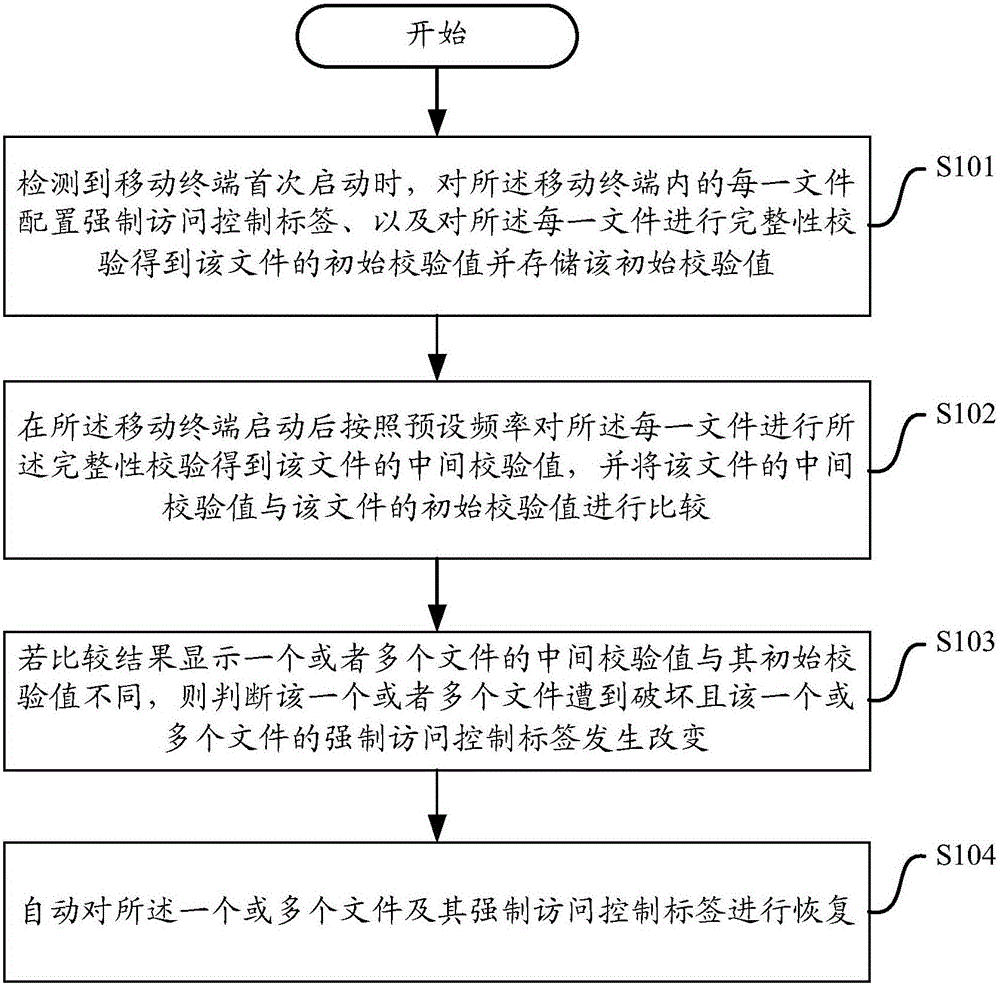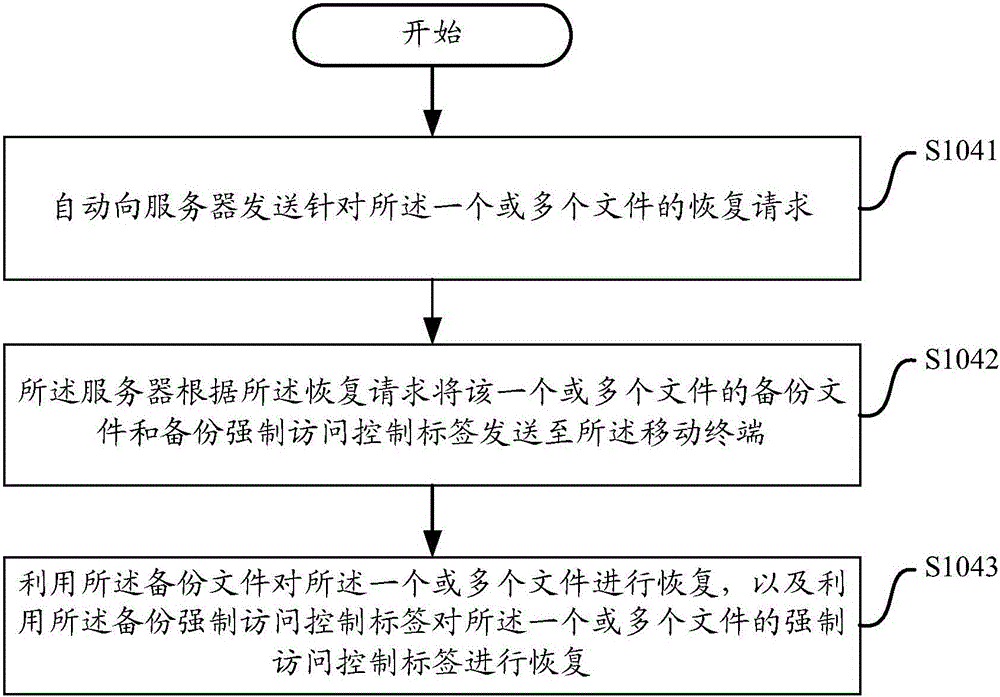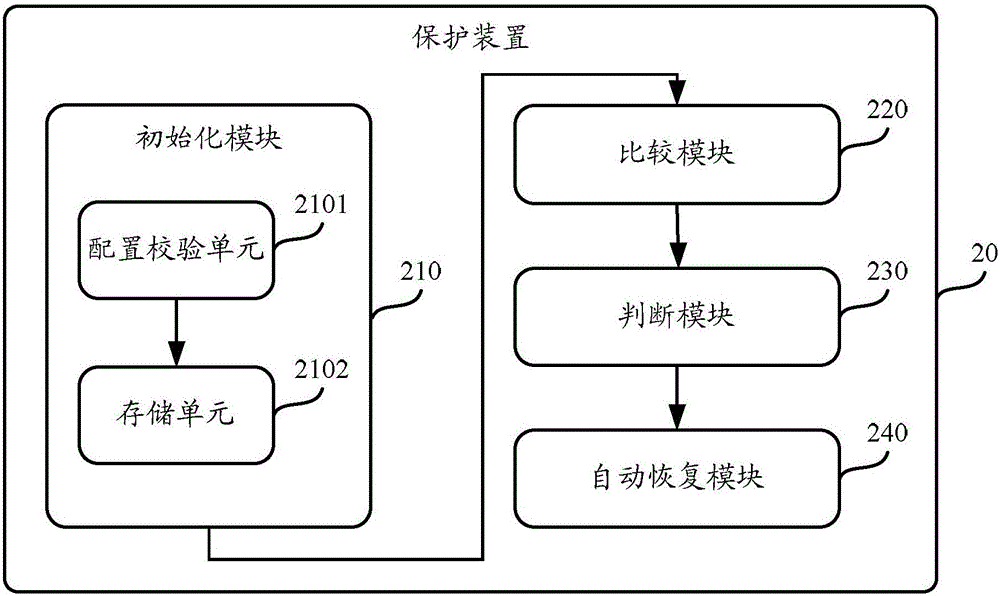Method and apparatus for protecting system security of mobile terminal
A mobile terminal and system security technology, applied in the field of information security, can solve the problems of low system security level, limited system protection of mobile terminals, and inability to realize the integrity protection of files in mobile terminals, so as to achieve a good user experience and solve system security problems. Effect
- Summary
- Abstract
- Description
- Claims
- Application Information
AI Technical Summary
Problems solved by technology
Method used
Image
Examples
Embodiment Construction
[0032] In order to better understand and illustrate the present invention, the present invention will be further described in detail below in conjunction with the accompanying drawings.
[0033] The invention provides a method for protecting the security of a mobile terminal system. Please refer to figure 1 , figure 1 It is a flow chart of a specific embodiment of the mobile terminal system safety protection method according to the present invention. As shown in the figure, the protection method includes the following steps:
[0034] In step S101, when it is detected that the mobile terminal starts for the first time, a mandatory access control label is configured for each file in the mobile terminal, and an integrity check is performed on each file to obtain an initial check value of the file and store the initial check value;
[0035] In step S102, after the mobile terminal is started, the integrity check is performed on each file according to a preset frequency to obtai...
PUM
 Login to View More
Login to View More Abstract
Description
Claims
Application Information
 Login to View More
Login to View More - R&D
- Intellectual Property
- Life Sciences
- Materials
- Tech Scout
- Unparalleled Data Quality
- Higher Quality Content
- 60% Fewer Hallucinations
Browse by: Latest US Patents, China's latest patents, Technical Efficacy Thesaurus, Application Domain, Technology Topic, Popular Technical Reports.
© 2025 PatSnap. All rights reserved.Legal|Privacy policy|Modern Slavery Act Transparency Statement|Sitemap|About US| Contact US: help@patsnap.com



